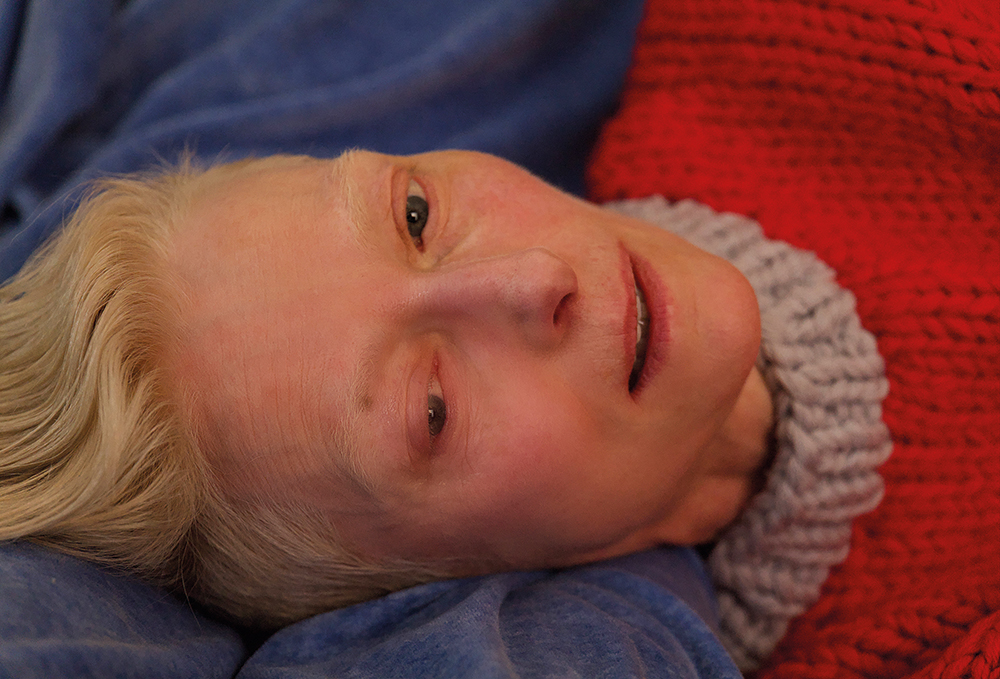The Room Next Door is Pedro Almodovar’s first film in the English language and if it is his last we can probably live with that. The film, which is adapted from a novel by Sigrid Nunez, stars Tilda Swinton and Julianne Moore, who are terrific whatever they do, and it is aesthetically divine (the knitwear, in particular, is sensational). But dramatically it’s thin gruel. The subject matter is euthanasia, so you’d expect Almodovar to hold back on his usual flamboyant playfulness, bounciness and humour. But what is there to care about? Why do these two women matter? Where is that knitwear from? Spoiler alert: no answers are forthcoming.
Take the pill, Martha! Take the pill, then we can all go home!
Moore plays Ingrid, a successful author who reconnects with her old pal, Martha (Swinton). They haven’t been in touch for years, although we are never told why. Martha, a war reporter – always a war reporter, never a fishmonger – has stage three cervical cancer and has run out of treatment options. She has scored a pill on ‘the dark web’ so she might end her own life. (‘Cancer can’t get me if I get it first.’) But she does not want to die alone and asks if Ingrid will be in ‘the room next door’ when she does the deed. Given Ingrid’s most recent book is about her terror of death, you’d think she’d say ‘no way, José’, or even ‘Martha, you are asking me to commit a crime’ but she inexplicably agrees.
Martha lives in New York and has an exquisite Fifth Avenue apartment with an emerald-green kitchen and Louise Bourgeois artworks, but she wants to hear birdsong during her final days so hires a house in the woods near Woodstock. What Martha wants, Martha gets. We are meant, I’m sure, to sympathise and admire Martha but I found her selfish and tiresome. (Take the pill, Martha! Take the pill, then we can all go home!) The house, meanwhile, is a modernist, glass-and-steel stunner, furnished in Almodovar’s typical eye-popping colours with an Edward Hopper on the wall. Fair play to Martha. I wouldn’t mind dying here myself.
The two hang out, drinking tasteful teas from tasteful cups, watching Buster Keaton movies, reciting the ending from James Joyce’s ‘The Dead’. At a bookshop, they declare Roger Lewis’s Erotic Vagrancy ‘really fun’, so there will be much to please Roger Lewis. They have conversations that seem both stilted and pretentious: ‘I wonder what Virginia Wolf thought…’ one might say to the other.
We learn almost nothing about Ingrid; of Martha we discover more. She has an estranged adult daughter and a flashback tells us how this daughter was conceived, while another shows Martha out in the field during the Iraq war, woman-splaining to two Spanish monks (who refuse to leave Baghdad) about how dangerous it is. These scenes are clumsily executed and could have easily been excised. The only other character is Damian (John Turturro) who had dated Martha and then Ingrid. He is an academic who believes climate change is irreversible and that humans have lost all decency. He doesn’t exactly cheer up the place. In the final act, the estranged daughter turns up and this involves a casting choice so odd your jaw will drop and you will exclaim: ‘NO!’
There is some pleasure in watching Moore and Swinton mooch about in their sensational knitwear, even if Martha appears to be suffering from a movie version of cancer. The more it advances, the thinner, more beautiful and more stylish she becomes. It’s laughably unrealistic and possibly even offensive, especially if you’ve seen the disease up close and know it isn’t pretty and doesn’t involve great knits or fabulous tailoring. If Almodovar’s first English-language film does proves be his last and he returns to Spanish, there will be no complaints here.







Comments